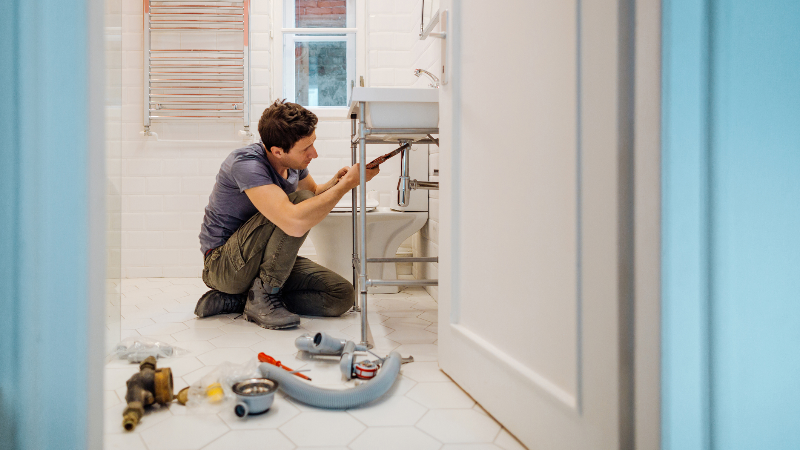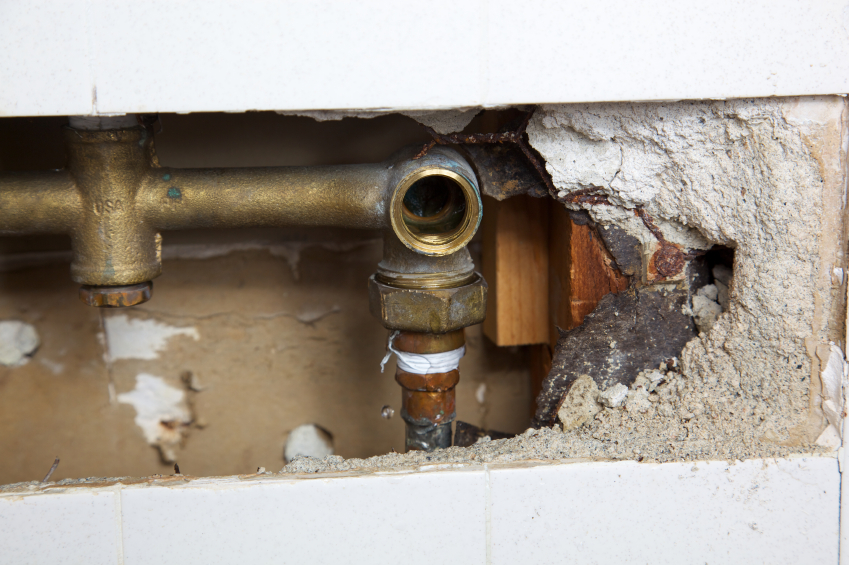Do you find yourself trying to find critical info around Diagnose Unwanted Plumbing Noises?

To detect loud plumbing, it is important to identify first whether the unwanted noises take place on the system's inlet side-in other words, when water is transformed on-or on the drain side. Noises on the inlet side have actually varied causes: too much water stress, worn shutoff as well as tap parts, poorly connected pumps or other home appliances, inaccurately placed pipeline fasteners, and plumbing runs including way too many tight bends or various other constraints. Noises on the drain side normally originate from poor place or, similar to some inlet side sound, a format having limited bends.
Hissing
Hissing sound that happens when a faucet is opened somewhat usually signals extreme water stress. Consult your local water company if you suspect this issue; it will certainly have the ability to tell you the water stress in your area and can set up a pressurereducing shutoff on the incoming water system pipeline if required.
Thudding
Thudding sound, frequently accompanied by shivering pipelines, when a faucet or device shutoff is turned off is a condition called water hammer. The sound as well as vibration are brought on by the reverberating wave of stress in the water, which unexpectedly has no location to go. Occasionally opening up a shutoff that releases water promptly right into a section of piping consisting of a limitation, arm joint, or tee installation can generate the very same condition.
Water hammer can typically be treated by setting up installations called air chambers or shock absorbers in the plumbing to which the problem valves or taps are attached. These tools allow the shock wave created by the halted circulation of water to dissipate airborne they contain, which (unlike water) is compressible.
Older plumbing systems might have brief upright areas of capped pipeline behind walls on faucet runs for the same function; these can eventually fill with water, decreasing or damaging their effectiveness. The remedy is to drain pipes the water supply totally by shutting down the main water system valve and opening up all faucets. After that open the main supply valve and also shut the faucets one by one, beginning with the faucet nearest the valve and finishing with the one farthest away.
Babbling or Shrilling
Extreme chattering or shrieking that occurs when a valve or faucet is activated, which typically goes away when the fitting is opened totally, signals loosened or malfunctioning internal components. The option is to replace the shutoff or faucet with a brand-new one.
Pumps as well as appliances such as washing devices and dishwashers can transfer electric motor sound to pipelines if they are improperly attached. Connect such products to plumbing with plastic or rubber hoses-never rigid pipe-to isolate them.
Other Inlet Side Noises
Creaking, squeaking, scraping, breaking, as well as touching typically are caused by the development or tightening of pipes, normally copper ones supplying hot water. The audios happen as the pipes slide versus loose bolts or strike close-by residence framework. You can usually pinpoint the area of the problem if the pipelines are exposed; just adhere to the audio when the pipes are making noise. More than likely you will certainly discover a loose pipeline hanger or an area where pipelines exist so near to flooring joists or other framing items that they clatter versus them. Connecting foam pipe insulation around the pipes at the point of get in touch with must treat the problem. Be sure straps as well as hangers are safe and also offer ample assistance. Where feasible, pipeline bolts should be connected to enormous architectural elements such as foundation walls as opposed to to framing; doing so lessens the transmission of resonances from plumbing to surfaces that can intensify and transfer them. If attaching bolts to framing is inescapable, cover pipes with insulation or various other resilient material where they call bolts, as well as sandwich completions of brand-new bolts between rubber washers when installing them.
Dealing with plumbing runs that suffer from flow-restricting tight or various bends is a last resource that needs to be carried out only after speaking with a competent plumbing specialist. Regrettably, this situation is fairly common in older houses that might not have actually been built with interior plumbing or that have actually seen several remodels, specifically by amateurs.
Drain Sound
On the drainpipe side of plumbing, the principal objectives are to remove surface areas that can be struck by dropping or rushing water as well as to protect pipes to consist of inescapable audios.
In brand-new building, bathtubs, shower stalls, bathrooms, and also wallmounted sinks as well as basins ought to be set on or against resilient underlayments to lower the transmission of noise through them. Water-saving commodes and also taps are less noisy than conventional designs; install them rather than older types even if codes in your location still allow utilizing older fixtures.
Drains that do not run up and down to the basement or that branch into horizontal pipeline runs supported at floor joists or various other framing present especially bothersome sound troubles. Such pipelines are large enough to emit substantial resonance; they also bring substantial quantities of water, that makes the situation even worse. In brand-new construction, define cast-iron dirt pipes (the big pipelines that drain pipes bathrooms) if you can manage them. Their enormity contains a lot of the sound made by water passing through them. Additionally, prevent transmitting drainpipes in walls shown to bed rooms and also rooms where people gather. Walls having drains should be soundproofed as was defined earlier, making use of double panels of sound-insulating fiber board and also wallboard. Pipes themselves can be covered with special fiberglass insulation created the purpose; such pipelines have an impervious plastic skin (occasionally containing lead). Outcomes are not constantly satisfactory.
If Your Plumbing is Making These Sounds, There’s a Problem
A Bang or Thump When You Turn Off a Faucet
If a loud bang or thump greets you each time your turn off running water, you likely have a water hammer. A water hammer occurs when the water velocity is brought to a halt, sending a shock wave through the pipe. It can be pretty jarring — even worse, damaging to your plumbing system. All that thudding could loosen connections.
Strange Toilet Noises
You’re so familiar with the sounds your toilet makes that your ears will be attuned to anything out of the ordinary. Fortunately, most unusual toilet noises can be narrowed down to just one of several problems.
Foghorn sound:
Open the toilet tank Flush the toilet When you hear the foghorn noise, lift the float to the top of the tank If you’re ambitious, you can remove the ballcock valve and disassemble it to replace the washer. Or you can more easily replace the ballcock valve entirely. This device is relatively inexpensive and available at most any hardware store.
Persistent hissing:
The hissing following a flush is the sound of the tank filling. It should stop once the tank is full. But if the hissing continues, it’s likely because water is leaking out of the tank. The rubber flap at the bottom of the tank can degrade, letting water slip through and into the bowl. That’s why the tank is refilling continuously. Fortunately, this is an easy fix:
Cut the water to the toilet by closing the shutoff valve on the water supply line. Flush the toilet to drain the tank. Disconnect the flapper Attach the new flapper Gurgling or bubbling:
Gurgling or bubbling suggests negative air pressure in the drain line, likely resulting from a clog. As air releases, it causes the water in the toilet to bubble. This could either be a minor issue or a major one, depending on the clog’s severity. Clogs can be caused by toilet paper or more stubborn obstructions such as tree roots. If you can’t work out the clog with a plunger, contact a professional plumber for assistance because a clog of this magnitude could lead to filthy and unsanitary sewage backups in your sink bathtub.

I stumbled upon that page on Why Do My Pipes Make Noises while doing a search on the search engines. Those who enjoyed our blog entry kindly do not forget to share it. I appreciate reading our article about Diagnose Unwanted Plumbing Noises.
Expert plumbing diagnostics and repair.